Wonsik Kim
Attention-based Ensemble for Deep Metric Learning
Aug 31, 2018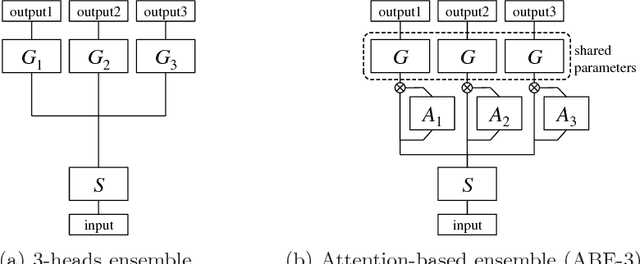
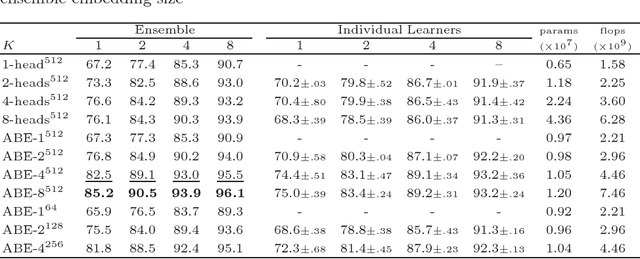
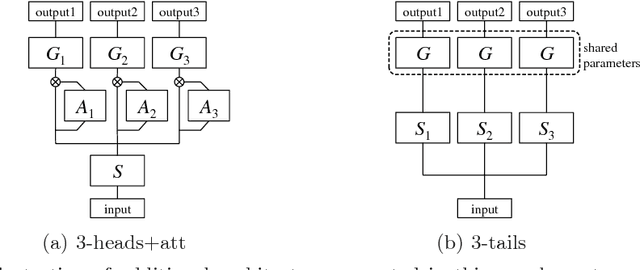

Abstract:Deep metric learning aims to learn an embedding function, modeled as deep neural network. This embedding function usually puts semantically similar images close while dissimilar images far from each other in the learned embedding space. Recently, ensemble has been applied to deep metric learning to yield state-of-the-art results. As one important aspect of ensemble, the learners should be diverse in their feature embeddings. To this end, we propose an attention-based ensemble, which uses multiple attention masks, so that each learner can attend to different parts of the object. We also propose a divergence loss, which encourages diversity among the learners. The proposed method is applied to the standard benchmarks of deep metric learning and experimental results show that it outperforms the state-of-the-art methods by a significant margin on image retrieval tasks.
Occlusion-Aware Video Deblurring with a New Layered Blur Model
Nov 29, 2016



Abstract:We present a deblurring method for scenes with occluding objects using a carefully designed layered blur model. Layered blur model is frequently used in the motion deblurring problem to handle locally varying blurs, which is caused by object motions or depth variations in a scene. However, conventional models have a limitation in representing the layer interactions occurring at occlusion boundaries. In this paper, we address this limitation in both theoretical and experimental ways, and propose a new layered blur model reflecting actual blur generation process. Based on this model, we develop an occlusion-aware deblurring method that can estimate not only the clear foreground and background, but also the object motion more accurately. We also provide a novel analysis on the blur kernel at object boundaries, which shows the distinctive characteristics of the blur kernel that cannot be captured by conventional blur models. Experimental results on synthetic and real blurred videos demonstrate that the proposed method yields superior results, especially at object boundaries.
MRF Optimization by Graph Approximation
May 13, 2015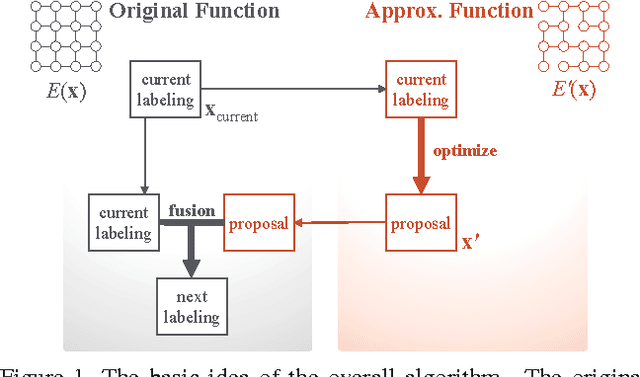

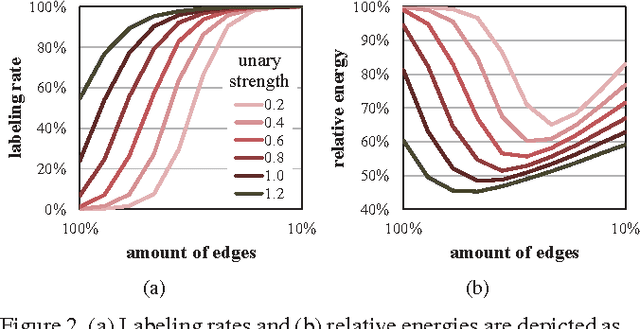

Abstract:Graph cuts-based algorithms have achieved great success in energy minimization for many computer vision applications. These algorithms provide approximated solutions for multi-label energy functions via move-making approach. This approach fuses the current solution with a proposal to generate a lower-energy solution. Thus, generating the appropriate proposals is necessary for the success of the move-making approach. However, not much research efforts has been done on the generation of "good" proposals, especially for non-metric energy functions. In this paper, we propose an application-independent and energy-based approach to generate "good" proposals. With these proposals, we present a graph cuts-based move-making algorithm called GA-fusion (fusion with graph approximation-based proposals). Extensive experiments support that our proposal generation is effective across different classes of energy functions. The proposed algorithm outperforms others both on real and synthetic problems.
Genetic Representations for Evolutionary Minimization of Network Coding Resources
Feb 07, 2007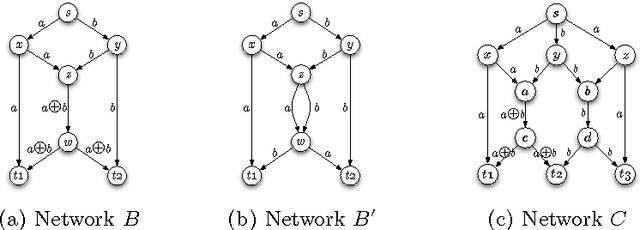



Abstract:We demonstrate how a genetic algorithm solves the problem of minimizing the resources used for network coding, subject to a throughput constraint, in a multicast scenario. A genetic algorithm avoids the computational complexity that makes the problem NP-hard and, for our experiments, greatly improves on sub-optimal solutions of established methods. We compare two different genotype encodings, which tradeoff search space size with fitness landscape, as well as the associated genetic operators. Our finding favors a smaller encoding despite its fewer intermediate solutions and demonstrates the impact of the modularity enforced by genetic operators on the performance of the algorithm.
 Add to Chrome
Add to Chrome Add to Firefox
Add to Firefox Add to Edge
Add to Edge